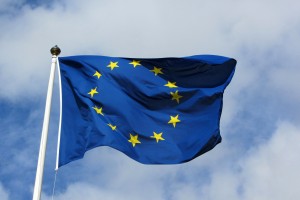
After more than 40 years of operation, DTVE is closing its doors and our website will no longer be updated daily. Thank you for all of your support.
Europe’s copyright rules battle
 The European Union’s key institutions – the Commission, Council and Parliament – this week finally agreed new copyright rules in the face of intense opposition and lobbying from internet giants.
The European Union’s key institutions – the Commission, Council and Parliament – this week finally agreed new copyright rules in the face of intense opposition and lobbying from internet giants.
The agreed deal between the institutions – the outcome of the so-called trilogue process that underpins EU rule-making that had already been subject to delay in December – includes the controversial Article 13 that will put the onus on the likes of YouTube to remove copyright infringing material without being asked, something that online platforms have long resisted.
For the measure’s supporters, Article 13 reinforces the position of content rightsholders and enables them to be properly remunerated. But for some of its opponents, who have tended to rail against it in near-apocalyptic terms, it means the effective end of the internet as we know it.
Much of the attention of European lawmakers has focused on tackling the so-called ‘value gap’ between broadcasters and the online world whereby online platforms have been seen as free riders that benefit from the work of others to drive traffic across their own platforms but fail to provide adequate remuneration in return.
The ‘value gap’ solution has been criticised on the grounds that it will require platforms to scan every piece of content that is uploaded to their sites, while the technology companies themselves have been concerned that they will become liable for any copyrighted material found on their sites.
For others, however, only these types of rules will ensure that rightsholders are properly recompensed for their efforts. The perception that YouTube is a free rider that makes advertising revenues from others’ works and provides little if any of this money to those rightsholders is now well established among important players in the European media landscape.
Broadcasters and rightsholders have been running out of patience with YouTube’s commercial approach even towards content that is placed on the site legitimately. France Télévisions director-general Delphine Ernotte recently said that the pubcaster was “going to stop putting complete programmes on YouTube” after describing the revenues gained from distributing content on the platform as little more than “a tip”. Ernotte uncompromising stance won approval from fellow French broadcasters TF1 and M6.
A consortium of French broadcasters and rights organisations also took issue with YouTube’s attempts to harness the support of its army of content creators to pressure European lawmakers to backtrack on the copyright rules, arguing in forceful terms that the Google video-sharing site’s campaign was ““based on the manipulation of users, influencers and the young” and was “unacceptable”.
In fact the end result agreed by the European institutions involves something of a fudge regarding the responsibility of Google and its peers to prevent unauthorised content appearing on their sites. Platforms will have to make “best efforts” to obtain an authorisation for use of copyrighted material, or to make sure that unauthorised use of content isn’t made available if a rights holder has provided information about their IP.
Forcing the online platforms to seek authorisation, and to take measures to “ensure the unavailability of unauthorised content” to avoid liability, is an attempt to address the ‘value gap’. The platforms will also have to “act expeditiously to remove any unauthorised content following a notice received and make also their best efforts to prevent future uploads.”
The EU has made an exception for online services providers that have been in existent in the EU for less than three years, with turnover of less than €10 million and fewer than five million monthly users – criteria that observers may find somewhat arbitrary.
These smaller platforms only need to prove that they have made their best efforts to obtain an authorisation and that they have acted expeditiously to remove the unauthorised works notified by right holders from their platform.
However, even the stronger requirements made of the bigger platforms falls short of the mandatory use of filters to prevent the uploading of unauthorised material in the first place that online platforms and their supporters feared.
One problem with the new rules is not that they will destroy the internet or break the power of big tech players – a development that many would no doubt welcome – but that they remain too open to interpretation, leaving too much scope for legal battles over the finer points of implementation as they come into force. EU directives have to be transposed into national law by member states, leaving room for interpretation, as opposed to regulations, which have to be enforced in all member states simultaneously, leaving further room for interpretation and variation across the EU.
The controversy over Article 13 is likely to continue to rage. While supporters of the directive argue that the opposition to it is disingenuous, the big tech companies are unlikely to give up the battle. Meanwhile, internet advocates and content creators are also continuing to lobby and petition against the new rules. These rules also still need to be confirmed by the European Parliament and the Council of the EU before they come into force.


